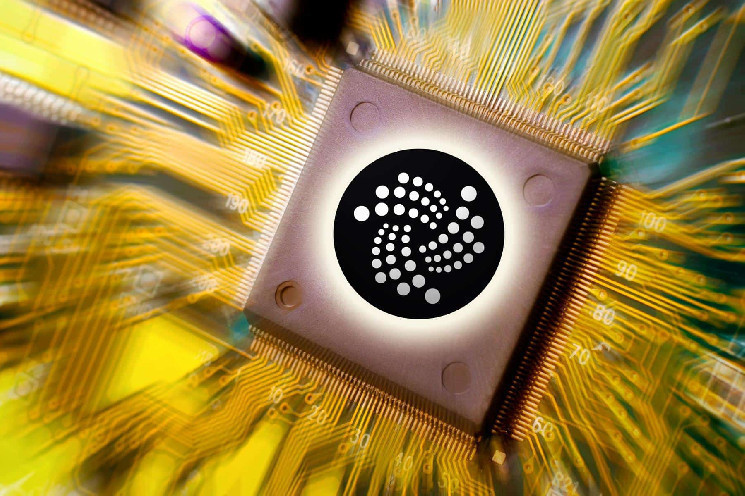- IOTA’s recent developments, such as the launch of the IOTA EVM Mainnet, and integration with Goldsky for improved data accessibility highlight its commitment to interoperability and real-world applications.
- With initiatives like the liquidity bootstrapping program and the “Beyond the Chain” workshop, IOTA is positioning itself as a DLT research and development leader.
In this rapidly evolving field of Distributed Ledger Technology (DLT), IOTA is making a name for itself by taking a distinctive approach to blockchain technology and working on ambitious projects that blend real-world applications with cutting-edge cryptographic methods.
The IOTA Network has recently announced major integrations, launches, and other applications, that shape the future of decentralized networks. By using a Directed Acyclic Graph (DAG) architecture known as the Tangle, IOTA sets itself apart from other traditional blockchain networks. In comparison to the traditional blockchain networks, IOTA DAG architecture enables free transactions and greater scalability.
Apart from simple currency or asset transactions, IOTA’s vision extends beyond as it aims to become the backbone for the Internet of Things (IoT) while seamlessly facilitating value and data transfers. Let’s take a look at some of the recent developments within the IOTA ecosystem.
1. The IOTA EVM Mainnet Launch
The launch of the IOTA EVM mainnet is a major breakthrough for the network as it introduces a fully compatible Ethereum Virtual Machine (EVM) Layer, thereby allowing developers to run Ethereum-based applications on the IOTA network. This integration also underscores IOTA’s versatility and commitment to interoperability and compatibility in the DLT space.
As reported by Crypto News Flash, the IOTA EVM recently introduced a liquidity bootstrapping program that flushes the liquidity of 172 million IOTA tokens to boost the platform’s growth.
2. Goldsky Integration
IOTA announced its partnership with Goldsky to boost its ecosystem by improving data indexing and accessibility, which is crucial for developers who are building complex applications on the network. This ensures that the builders on the IOTA EVM can provide a great user experience. Furthermore, per the Crypto News Flash report, the Goldsky integration solves many data infrastructure issues while allowing developers to focus on other important tasks and building stuff.
3. Circular Economy Initiatives
The IOTA DLT has a major role to play in the circular economy research, such as the launch of the I3-Lab at Imperial College London last month. Per the CNF report, this initiative leverages IOTA distributed ledger technology (DLT) to develop sustainable business models while decoupling economic growth from resource consumption. Besides, it also demonstrates IOTA’s dedication to using technology as well as environmental sustainability.
4. Research and Development
The “Beyond the Chain” workshop showcases IOTA’s ongoing research in DAG technology, exploring new possibilities for overcoming the limitations of traditional blockchains. This event highlights IOTA’s leadership in DLT research, driving the technology’s capabilities and applications forward.
IOTA’s roadmap looks promising as it aims to enhance interoperability, scalability, and utility in real-world applications. With its recent advancements, IOTA is well-positioned to play a significant role in the future of DLTs, particularly in sectors requiring high transaction throughput and scalability, such as IoT and smart cities.
The IOTA cryptocurrency has corrected another 2% from yesterday, falling to $0.1406, with its market cap at $472 million.
